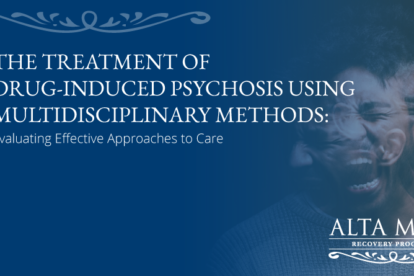Speedballing: The Current Fourth Wave of the Overdose Crisis

We are in the midst of a speedballing crisis. The fourth and current wave of the drug overdose crisis is comprised of the use of fentanyl (an opioid) with cocaine or methamphetamine, both stimulants. (This combination use is often referred to as “speedballing.”) For the first time, according to a report from Millennium Health, methamphetamine and cocaine have overtaken heroin or prescription opioids in nearly every state’s fentanyl combination. In addition, the increase in overdose deaths from speedballing is shocking: Deaths from fentanyl with stimulants soared from less than 1 percent in 2010 to about a third of all overdose deaths in 2021.
Guest Author Mark S. Gold, MD

Mark S. Gold, MD, is an author, inventor, and mentor who has had over 1,000 peer-reviewed publications since beginning his academic career at the University of Florida College of Medicine and Yale University School of Medicine in the 1970s. He is best known for developing the pioneering translational laboratory to human research methods of discovery for addiction and psychiatry. He has over 30,000 academic research citations and an H index of 93. He has made impactful contributions to psychiatry, neuroendocrinology, radiation oncology, transplant biology, orthopedic surgery, public health, pain, obesity medicine, and substance use disorders. Gold was a founding member of the McKnight Brain Institute.
Why Opioids and Stimulants Are Often Taken Together
We are in the midst of a speedballing crisis. The fourth and current wave of the drug overdose crisis is comprised of the use of fentanyl (an opioid) with cocaine or methamphetamine, both stimulants. (This combination use is often referred to as “speedballing.”) For the first time, according to a report from Millennium Health, methamphetamine and cocaine have overtaken heroin or prescription opioids in nearly every state’s fentanyl combination. In addition, the increase in overdose deaths from speedballing is shocking: Deaths from fentanyl with stimulants soared from less than 1 percent in 2010 to about a third of all overdose deaths in 2021.
History has shown that people who chronically use opioids often turn to stimulants to offset tiredness accompanying drugs like heroin, fentanyl, marijuana, alcohol, and barbiturates (also known as downers). Stimulants (uppers) like cocaine and methamphetamine generate a surge in dopamine and feelings of related “pleasure,” while opioids affect the body through specific interactions with opioid receptors. As a result, speedballing is a dual assault on the brain’s pleasure system. Over time, the system becomes overused and deficient, leading to an inability for the person to experience pleasure and to the development of depression and even suicidality. This was true in the late 1970s when speedballing was popular and is also true in the current period of speedballing.
The addition of methamphetamine among people who use fentanyl reached a record high in 2023, as demonstrated by urinary drug tests (UDTs), while abuse of prescription opioids reached historic lows. Cocaine use surges in some regions of the United States are associated with fentanyl use.
In 2023, 60 percent of drug test specimens containing fentanyl included methamphetamine, an increase of 875 percent since 2015, according to Millennium’s report. It was also the first time methamphetamine and cocaine were detected more often in urine drug tests than heroin and prescription opioids. About a quarter of fentanyl-positive specimens contained cocaine, 17 percent included heroin, and just 7 percent showed prescription opioids. Almost all fentanyl-positive specimens were positive for at least one additional substance; almost half contained three or more drugs of abuse.
Everything Old Is New Again
The combination use of stimulants like cocaine and meth with depressants like fentanyl is not new. Actor John Belushi died at age 33 in Los Angeles in 1982 after being injected with a lethal combination of cocaine and heroin.
Cocaine, once considered the perfect party drug, was shown in the 1980s to be highly addicting and even more dangerous when smoked or injected and taken alongside alcohol, opioids, and other drugs. Chris Farley, a brilliant Saturday Night Live comic in the 1990s, died of a combination of cocaine and morphine.
Amy Winehouse died of alcohol poisoning at age 27 after receiving treatment for crack, heroin, and alcohol. Polysubstance use appears to be the cause of death for actor Heath Ledger and singer Elvis Presley. Although an autopsy failed to show an obvious cause of Presley’s death, two months later, the toxicology report revealed considerable polypharmacy: 14 drugs were identified, including codeine (at 10 times the therapeutic level), methaqualone, morphine, Demerol-meperidine, ethchlorvynol, diazepam-valium, and several barbiturates.
Deaths From Multiple Drug Use
Death can occur from overdosing on a single or multiple drugs or from combined drug intoxication (CDI) due to polydrug use. Polydrug use often carries more risks than the use of a single drug due to an increase in side effects and drug synergy—the multiplier effect occurring when more than one drug is taken. For example, the chance of death from overdosing on opioids is greatly increased when consumed with alcohol, benzodiazepines, or sleeping pills.
We're Here to Help. Call Today!
866-922-1350Looking Back: The Initial Cocaine Experience
Cocaine was first synthesized in pure form by Albert Niemann in 1860 when he extracted pure cocaine powder from the leaves of Erythroxylum coca (the coca plant). Soon after its isolation, experts tried to cure numerous maladies with cocaine. Sigmund Freud was concerned about a friend, Dr. Ernst Fleishl von Markow, with a morphine addiction. Freud figured there was one cure—cocaine.
Freud dosed Fleishl with cocaine, and the morphine dependence waned. But before long, Fleishl developed an addiction to cocaine. He became paranoid, experiencing convulsions and tactile hallucinations known as coke or crank bugs. This is a creepy sensation caused by chronic cocaine toxicity in which the sufferer feels like insects or snakes are crawling under their skin.
In the 1960s, David Smith, MD, a founder of the Haight Ashbury Free Clinic, noted that heroin and cannabis users constituting the peace and love movement in the area had morphed into biker-fueled meth users. Smith also coined the phrase, “Speed kills.” In the early 1980s, historian David Musto observed history often repeats itself, and cocaine use epidemics follow opioid epidemics, and then psychostimulant self-administration becomes dominant.
Considering “Meth”
Methamphetamine, an N-methyl analog of amphetamine, is a serious public health problem worldwide, and an estimated 36 million people use the drug recreationally. Methamphetamine is cheap to produce and can be synthesized anywhere. The drug, known as meth, crystal meth, and ice, is available as a powder, tablet, liquid, or crystalline salt and is ingested, smoked, or injected. Researcher Jean Lud Cadet showed methamphetamine has a profound effect on the brain and behavior, which may be irreversible.
Record Drug Use Deaths in Oregon
Speedballing is a major problem in Oregon. Yearly fentanyl overdose deaths in Oregon grew by an estimated 1,500 percent since before the pandemic, by far the largest increase in the United States, as federal data show. Oregon voters passed the most liberal drug law in the country in November 2020, decriminalizing possession of small amounts of hard drugs. The state is in the process of recriminalizing drugs they previously decriminalized.
Problem: Lack of Treatments for Cocaine and Meth Overdoses
As Yale professor of psychiatry Brian Fuehrlein suggested in my previous post, treatment should start immediately after an overdose reversal. However, although treatments for opioid use disorder (OUD) are safe and effective, they are often discontinued, leading to a revolving door of overdose-rescue-medication-assisted treatment (MAT) dropout overdose. Also, while Narcan reverses opioid overdose, there are no comparable treatments for cocaine or methamphetamine overdoses. Nor are there medications for cocaine or methamphetamine use disorders or cravings. To make matters worse, research by the National Institute of Drug Abuse (NIDA) has shown methamphetamine induces changes in the brain that resemble the effects of a head injury or concussion.
Emergency Effects of Cocaine and Methamphetamine
Both cocaine and methamphetamine cause dopamine deficiencies and other changes in the brain, but emergencies may include high fever, racing heart, sometimes with palpitations, excessive respirations, and a mismatch between oxygen needs and delivery to the heart and brain. Heart attacks, strokes, delirium, hallucinations, heat stroke, and cardiovascular and respiratory collapse are all risks. Emergency room treatment of a speedball overdose includes naloxone (Narcan) for opioid reversal, plus packing the person in ice to avoid a hyperthermic crisis and treating emergency symptoms. After the crisis, residential treatment with psychotherapy, dietary changes, and a program of vigorous physical exercise may be used.
Conclusion
Without prevention, history repeats itself, and the opioid epidemic is becoming a meth and cocaine epidemic. Treatments are lacking, and giving medication-assisted treatment for opioid use disorder is not enough. Paying attention as well as further researching the problem is urgently needed to address the current fourth wave of opioid overdoses associated with the old and new problem of speedballing.
References
Swenson S, Blum K, McLaughlin T, Gold MS, Thanos PK. The therapeutic potential of exercise for neuropsychiatric diseases: A review. J Neurol Sci. 2020 May 15;412:116763. doi: 10.1016/j.jns.2020.116763. Epub 2020 Mar 4. PMID: 32305746.
Gold MS, Kobeissy FH, Wang KK, Merlo LJ, Bruijnzeel AW, Krasnova IN, Cadet JL. Methamphetamine- and trauma-induced brain injuries: comparative cellular and molecular neurobiological substrates. Biol Psychiatry. 2009 Jul 15;66(2):118-27. doi: 10.1016/j.biopsych.2009.02.021. Epub 2009 Apr 5. PMID: 19345341; PMCID: PMC2810951.
Dackis CA, Gold MS. New concepts in cocaine addiction: the dopamine depletion hypothesis. Neurosci Biobehav Rev. 1985 Fall;9(3):469-77. doi: 10.1016/0149-7634(85)90022-3. PMID: 2999657.






